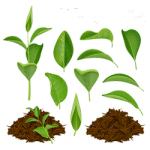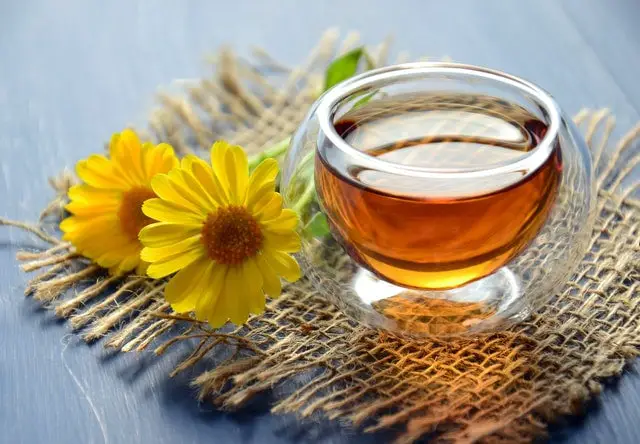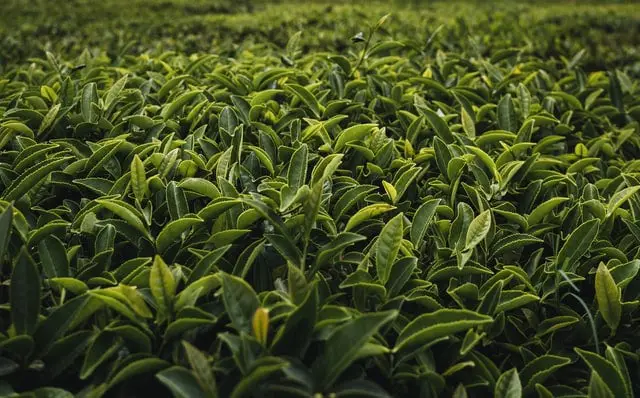
The truth is that most people don’t really think too much about where their tea comes from.
Sure, you may have a cursory idea of where it is grown.
However, can you name some of the main tea growing regions?
If the answer is no, then this is the post for you!
Here you can discover some interesting facts about where tea is grown around the globe.
Contents
Before looking at where tea is grown today, let’s first take a look at the origin of tea.
There was debate among the experts as to where tea actually originated.
Some claimed China as the birthplace, while others were insistent that tea first began to grow in India.
The discovery of a fossilized tea leaf, however, seemed to settle this argument for once and for all.
Tea originated in China, more specifically, Yunnan.
In reality, though, it was more likely that tea trees originated in a larger area.
This area has now been divided into China, Vietnam, Laos, Thailand, Myanmar, and India.
In China, tea was used as a medicinal remedy for thousands of years.
It was only considered a beverage with the Tang and Song Dynasties.
Related Article:
Taking A Closer Look At Yunnan Tea

So, if China had a monopoly on growing tea, how did it spread to the rest of the world?
Well, this is where the British come in.
In the beginning, England only imported tea from China. After a while, though, this became too expensive.
Not to mention, there were other factors that disrupted the supply of tea from China on occasion.
In order to prevent this from happening, the Brits began to grow tea in India and then other countries.
After tea became a more popular beverage around the world, an even greater number of countries began to grow their own tea.
Related Articles
Let the Initiation Begin! All You Need to Know About Tea for Beginners
Heading back to the present, let’s take a look at where tea is grown now.
There are 61 countries around the world currently growing tea!
Tea is grown in Asia, the Middle East, Africa, Europe, South America and North America.
The regions that grow tea are as follows:

Let’s now take a closer look at the top five tea producing countries – China, India, Kenya, Sri Lanka, and Vietnam.
Fittingly enough, China continues to be the largest producer of tea in the world.
It produced 2,473,443 tonnes in 2017.
As such, it is estimated that the country is responsible for around 30 to 35 percent of tea around the world.
In addition, China is one of the top green tea producers around the world.
It is estimated that around 1,325,050 tonnes of tea is produced in India every year.
However, because the country also consists of around one billion tea drinkers, around 70 percent of the tea that is grown is consumed within the country.
There are some famous types of Indian tea, including Assam and Darjeeling – these are named for the regions that they are grown in.
India is the largest producer of black tea in the world.
The tea industry in Kenya is a rather unusual ones.
Unlike its other top 5 competitors, Kenya doesn’t have any particularly large tea estates.
Instead, most of the tea is grown on smaller farms, often less than one acre each.
This doesn’t stop the nation from growing around 439,857 tons each year though.
Tea growing in Sri Lanka began in 1867 and today is one of the country’s top industries.
It produces around 349,699 tons each year.
More of the more notable things about tea growing in Sri Lanka is how the growers use the contour planting method.
This is where the plants are planted according to contours of hillsides.
There is balance among the tea producers in Vietnams.
Some of the tea is grown by large-scale companies, while there are also small-scale producers largely involved in artisan teas.
They largely grow CTC black tea and green tea, but also produce jasmine and lotus teas as well.
The country grows around 260,000 tons each year.
Is it possible to answer which region produces the best tea?
Well, yes and no. In some cases, the answer is quite straightforward. In others, not so much.
Let’s begin with green tea. If you want to enjoy top-quality green tea, it is best to buy it from Chinese or Japanese producers.
Related Articles
The Best Green Tea Brands for a Refreshing Brew
Of course, there is quite a bit of difference between Chinese and Japanese green teas.
Thus, your selection should be based on your preferred taste profile.
It should also be noted that not all Chinese and Japanese growers will offer up the same level of quality.
For the best tea, you will need to look for premium producers and brands. And, accordingly, you can expect to pay a higher price as well.
Now, what about black tea?
Well, this is where things get a little complicated.
For one thing, black tea is grown in a larger number of regions – mostly due to increased demand.
Most of these producers grow tea for the average taste bud. As such, an overwhelming amount of these black teas are of lower qualities.
Also, as with green tea, black tea can differ in terms of flavor from one place to another as well.
The Ceylon tea that is grown in Sri Lanka will vary in taste to Assam or Darjeeling taste in India.
Related Articles
Loose Tea or Tea Bags – Your Guide to Find the Best Black Tea Brands
Even when you narrow down a preferred taste, there is still some work to be done.
You have to then identify premium leaves. These tend to be grown in higher elevations and are carefully picked and processed.
You should look for whole leaves, not ones that have been crushed and torn by machines.
Once again, the truly good teas come with a premium price tag attached to them.
The gist of all of this is that high quality and low quality teas can be grown in all regions.
Thus, you should look for good quality tea rather than the best tea ever.
This is the full rundown of tea growing regions around the world. As you can see, it is a rather prolific and global industry.
Not to mention, there were probably some rather surprising entries in the list.
If you enjoyed this post, then you should check out our Pinterest page. We have lots of more interesting and exciting pins on tea. You are sure to love it!
